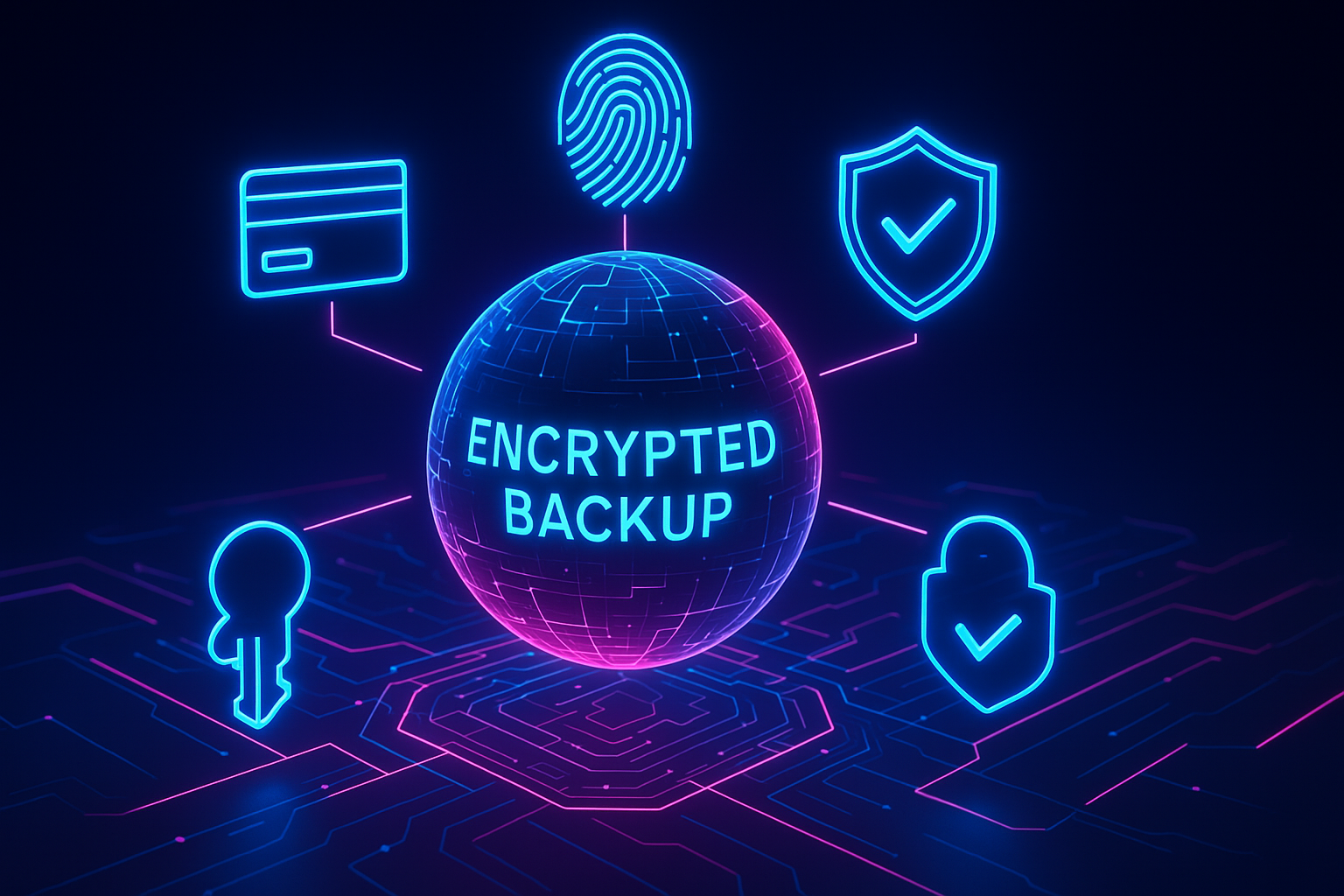Salesforce has a comprehensive disaster recovery strategy for various scenarios, from hardware failures to large-scale regional or international disasters. Salesforce enables organizations to back up configuration and important customer data so that it is accessible and can be recovered quickly after the disruption.
A comprehensive Salesforce disaster recovery plan requires organizations to assess their Salesforce environment diligently, assemble a multidisciplinary team for planning and implementation, comply with regulatory requirements, and more.
In addition to native Salesforce disaster recovery solutions, organizations should consider third-party data backup platforms to address potential deficiencies, such as the lack of dedicated metadata backup capabilities in Salesforce. Additionally, third-party backup solutions will protect and provide access to data during Salesforce outages. The article provides actionable guidelines for creating and implementing a Salesforce disaster recovery plan.
Steps to Create a Salesforce Disaster Recovery Plan
Creating a Salesforce disaster recovery plan requires a systematic step-by-step approach to ensure business continuity while minimizing losses.
1. Assemble a Disaster Recovery Team
Salesforce disaster recovery is a multidisciplinary initiative of organizational decision-makers, functional heads, managers, and IT team members. Make sure to clearly define roles and responsibilities to ensure a coordinated response during disasters such as natural calamities, cyber-attacks, or incidents triggered by human errors.
2. Conduct a Salesforce Environment Assessment
Salesforce environment assessment helps organizations identify critical assets, dependencies, and vulnerabilities. It also helps them understand configurations, integrations, and data flows to ensure accurate risk evaluation and create targeted recovery strategies.
After assembling a team, conduct a thorough assessment of your current Salesforce environment. You need to take inventory of all your Salesforce data,metadata and integrations with other applications. This will provide comprehensive visibility of your Salesforce platform and data that needs to be protected.
3. Identify Critical Business Processes and Assess Risks
Determine which business processes and data are most critical for your business operations. Identify and prioritize risks based on their impact on overall business performance. Define Recovery Time Objectives (RTO) and Recovery Point Objectives (RPO) for each critical process.
4. Document Disaster Recovery Plan
Document your Salesforce backup and disaster recovery plan outlining objectives, roles, and responsibilities, and a recovery roadmap in the event of business disruption due to cyber attacks, natural disasters, or human error. The plan should include data backup operations, emergency response, stakeholders responsibilities, communication plan, recovery process details etc.
5. Regulatory Compliance Assessment
If your company works in a regulated industry, then your organization has obligations to the governing body, such as GDPR, HIPAA, and CCPA, to disclose any data loss or issues. Consider the regulatory disclosure required in case of a breach and include the process for reporting data breaches.
6. Test Disaster Recovery Plan
You should evaluate the practical feasibility of your disaster recovery plan through testing and doing drills. Perform simulated incidents in a non-production environment to test the efficacy of your disaster recovery plan.
Periodically conduct drills to keep disaster recovery team members and employees updated on processes and policies and in a state of readiness to handle any events or incidents. Leverage the insights gained from drills to update the plan and address any shortcomings.
Additionally, the Salesforce disaster recovery plan should be regularly reviewed and updated to reflect changes in the business environment, technology updates, regulatory changes, or new threats.
By following these steps, you can create a robust Salesforce Disaster Recovery Plan that ensures resilience against various disruptions and minimizes downtime and data loss.
Recommended Read: Learn Ways to Safeguard Against Salesforce Data Loss with our detailed guide.
Key Components of a Disaster Recovery Plan
Salesforce disaster recovery plans are unique for each organization. However, there are basic components. that need to be there for every salesforce backup and disaster recovery plan, such as:
Risk Assessment and Business Impact Analysis (BIA)
The most critical component of a disaster recovery plan is a risk assessment to identify potential threats and vulnerabilities that could disrupt the organization's business operations. It also includes evaluating the potential downside or the impact of risks on business functions. This significantly helps to plan mitigation strategies and prioritize recovery efforts.
Backup and Data Protection Strategies
Implementing robust backup solutions to ensure data integrity and availability is an integral component of disaster recovery plans.
There are three primary types of backups, varying in terms of period for conducting data backups:
- Full Backups: Full backups involve copying all your Salesforce data at a specific time.
- Differential backups: The second type is differential backups, which copies all files that have changed since the last full backup.
- Incremental backups: The third type, incremental backups, only copies the files that have changed since the previous backup, irrespective of whether it was full, differential, or incremental.
You can select any backup type based on your business requirements for storage space efficiency and restoration time optimization. To choose a data backup type, you should also consider data size, change frequency, recovery time objectives (RTO), and storage capacity. Additionally, you must choose a backup frequency that minimizes data loss.
Recovery Point Objective (RPO) and Recovery Time Objective (RTO)
Establishing optimal RTO and RPO for critical applications and data is essential to minimize downtime and rebound after an incident. RPO is the maximum amount of data loss measured in time and helps you determine data backup frequency. RTO is the maximum acceptable downtime after a disaster strikes and indicates how quickly your system must be restored. RPO and RTO can be critical criteria for selecting a third-party data backup solution provider.
Data Security and Compliance Considerations
Following robust security measures to ensure data integrity and confidentiality during recovery is critical. You must use data encryption and secure identity and access management (IAM) to prevent unauthorized data access, tampering, or loss during transfer. Additionally, using secure transfer protocols to relay data from one location to another will help you prevent data loss.
Your disaster recovery plan should factor in data regulations and industry-specific compliance requirements else you risk incurring regulatory fines. You must also track the regulatory landscape for changes and update your plan accordingly.
Communication Plan
An essential element of the Salesforce data recovery plan is an effective communication strategy outlining how the organization will disseminate information to employees, customers, and other stakeholders. Establish a transparent chain of communication with key personnel's contact details. Develop templates for stakeholder updates and designate communication channels (email, chat, etc.).
How Flosum Helps with Salesforce Disaster Recovery
Flosum provides a robust Salesforce backup and disaster recovery solution through its modern platform and innovative features. Here are the key ways Flosum helps with Salesforce disaster recovery:
Comprehensive Backup Options
Flosum offers multiple backup options, including full, partial, and incremental backups. Based on your organization's data recovery requirements, you can choose the most suitable option. This ensures that your critical data is backed up efficiently and effectively, minimizing data loss.
Automated Backup Processes
Flosum automates data backup processes, ensuring your Salesforce data backups are performed regularly at a predetermined frequency you set. The automation enables you to maintain up-to-date backups, reducing the risk of data loss due to human error or system failures.
Optimized RTO and RPO for Quick Data Restoration and minimal data loss
Flosum data backup and archive platform supports full, point-in-time, or selective record restoration, enabling quick recovery from data loss incidents. The platform RTO of 5 minutes ensures minimal downtime, while the RPO of 4 hours ensures limited data loss for your organization.
Data and Metadata Management
Flosum backs up data and metadata, which is essential for maintaining relationships between Salesforce data objects. This comprehensive approach enables you to correctly link the recovered data to its respective objects and fields and restore customizations after an incident.
Security and Compliance
Flosum architecture leverages Salesforce and AWS security, ensures that data is stored safely, and adheres to compliance requirements such as GDPR and CCPA. Dual-layer security is an additional bonus that helps organizations protect sensitive data during a disaster. Similarly, high availability ensures the system recovers quickly, limiting the downtime for applications and data.
Activity Tracking and Reporting
The platform provides tools for activity tracking and reporting, allowing you to monitor backup processes and verify the integrity of Salesforce data backups. This feature helps you promptly identify issues and enhances overall data governance.
Flosum's advanced data backup technologies and innovative features enable you to recover Salesforce data from a disaster comprehensively, ensuring limited application downtime and minimal data loss.
Conclusion
Salesforce supports business continuity and disaster recovery; however, organizations must supplement this baseline provision with complementary disaster recovery solutions tailored to their specific operational requirements and security objectives.
Flosum's automated data backup and recovery solution significantly enhances Salesforce's disaster recovery capabilities, providing organizations with a reliable solution to safeguard their critical business data against unexpected disruptions. It complements Salesforce native disaster recovery and enhances your organization's business continuity capabilities. Flosum security features help protect data from unauthorised access or manipulation and ensure the integrity of operations during a disaster.
With Flosum, organizations can ensure that their customers can count on them for uninterrupted operations and secure data protection, even in the event of a major disaster. Flosum helps organizations with platform setup and implementation through its certified partners. This helps you to quickly integrate the solution into your existing Salesforce environment without significant disruption. Schedule a call to learn more.
Frequently Asked Questions (FAQ)
What is Salesforce Disaster Recovery?
Salesforce disaster recovery is a systematic methodological process and system implemented by an organization to ensure business continuity when it encounters disruption due to natural disasters, cyberattacks, human error, or other unforeseen circumstances.
The plan includes data backup and recovery strategies and instructions on maintaining access to critical applications. It also includes detailed response guidelines for employees to follow during business disruptions.
What is RTO and RPO in Salesforce?
In Salesforce, Recovery Time Objective (RTO) refers to the maximum acceptable downtime after a disaster. It indicates how quickly systems must be restored to resume operations and is represented in minutes.
Recovery Point Objective (RPO) defines the maximum allowable data loss measured in hours, indicating the duration for which an organization can lose data without significant impact on its business. It helps organizations determine the data backup frequency. Together, RTO and RPO guide effective disaster recovery planning.
What is the difference between BC and DR?
The Business Continuity plan focuses on maintaining overall organizational functionality to ensure essential operations continue uninterruptedly during and after disruptions. In contrast, Disaster Recovery explicitly addresses restoring IT systems and data following a disaster and is a subset of business continuity plans.
While business continuity encompasses broader risk management strategies, disaster recovery is a focused plan for recovering technology infrastructure and data access after incidents.
How much does the Salesforce Data Recovery Service Cost?
Based on publicly available information, Salesforce Data Recovery Service Cost service costs approximately $10,000 per recovery request and, on average, takes 6 to 8 weeks to complete. However, the costs vary depending on the organization's business requirements, data volume, and recovery period.
What are the Best Practices for Developing a Disaster Recovery Plan?
You must prioritize identifying and safeguarding key assets for effective Salesforce disaster recovery. Collaborate with management to assess potential losses and develop mitigation strategies. Establish comprehensive data backup and recovery solutions at offsite locations for a quick and secure recovery from disaster. Establish a team with defined roles and responsibilities and communication rules and protocols to be followed once a disaster is identified.
Thank you for subscribing








